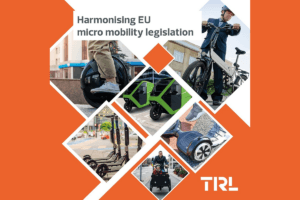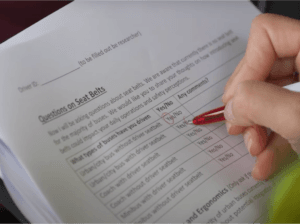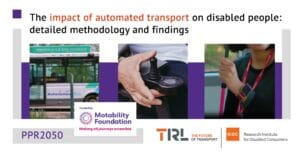A series of examples highlighting how data from vehicles can help traffic management and reduce emissions helped boost the perception of the technology to a group of industry experts.
The Transport Technology Forum’s SPATULA group on connected vehicles led an event at TRL’s Smart Mobility Living Lab in London and were joined by members of the Smart Mobility Living Lab’s Innovation Community where case studies were shared about data from vehicles, complementing the demonstrations at UTAC last year of services into them. The 50-strong group comprised local authority representatives, central government and the supply chain.
They heard how better kerbside management has a huge effect on lowering emissions, with parking experts Appyway explaining how 13 million tonnes of CO2 could be removed if all authorities used smart parking solutions, while kerbside management innovators Grid Smarter Cities, which uses data to manage deliveries and other use of space at the kerb, said that, if used in cities across the country, their solution could cut emissions by more than ULEZ schemes.
The TTF is committed to helping update their business case for the use of technology, which it is convinced make transport safer, greener and more efficient in an extremely cost-effective way, and therefore events like this, reaching many new local authorities, are vital.
The issue of value perception was highlighted by TRL’s Consultancy Manager Chris Lodge (pictured) who commented that often authorities perceive the benefits of technology as hit-and-miss. “A lot of the people that we engage with didn’t necessarily see the immediate return on investment from deploying Data Solutions on the road,” he said “There’s very much perception on technology that there’s a lot of outlay, and not enough clear return on investment for that outlay. So, people were saying, ‘Okay, if I spend this and get jam tomorrow, I don’t know what flavour it will be how many jars there will be, and that’s a barrier to people getting involved in the concept.’” The TTF is working to correct this misguided view by showing real examples of benefits.
“Using data from vehicles covers more of the network than roadside technology ever could, and is far more cost-effective,” explained SPATULA working group chair Andy Graham of White Willow Consulting. “We saw from Gaist how their100,000 connected vehicles cover the whole of our network each month, highlighting issues with the road condition and areas where there is dangerous driving. INRIX’s analysis of data from vehicles is helping manage signal-controlled junctions in a far more efficient way, while eCall is now in nearly a third of cars and vans on the strategic network, with an untapped ability in improving emergency service response times in the event of a serious collision. All these solutions shown are making a positive, cost-effective difference to the way we travel.”
Attendees also saw a video of connected vehicle solutions demonstrated at a SPATULA event at UTAC, Millbrook last October, and heard details of how the Smart Mobility Living Lab’s test bed in Greenwich is helping understand traffic management at nearly 90 per cent of the country’s intersections, how Navtech Radar is fusing roadside and vehicle data to make roads safer and Beam Technology’s solutions are helping authorities receive data from active travellers as well as motorised vehicles.
The SPATULA group will be sharing more of its work as one of six Working Groups presenting at the TTF Annual Conference in Leeds from 25-27 April. More details are here.
(Picture courtesy TTF/TRL)



























